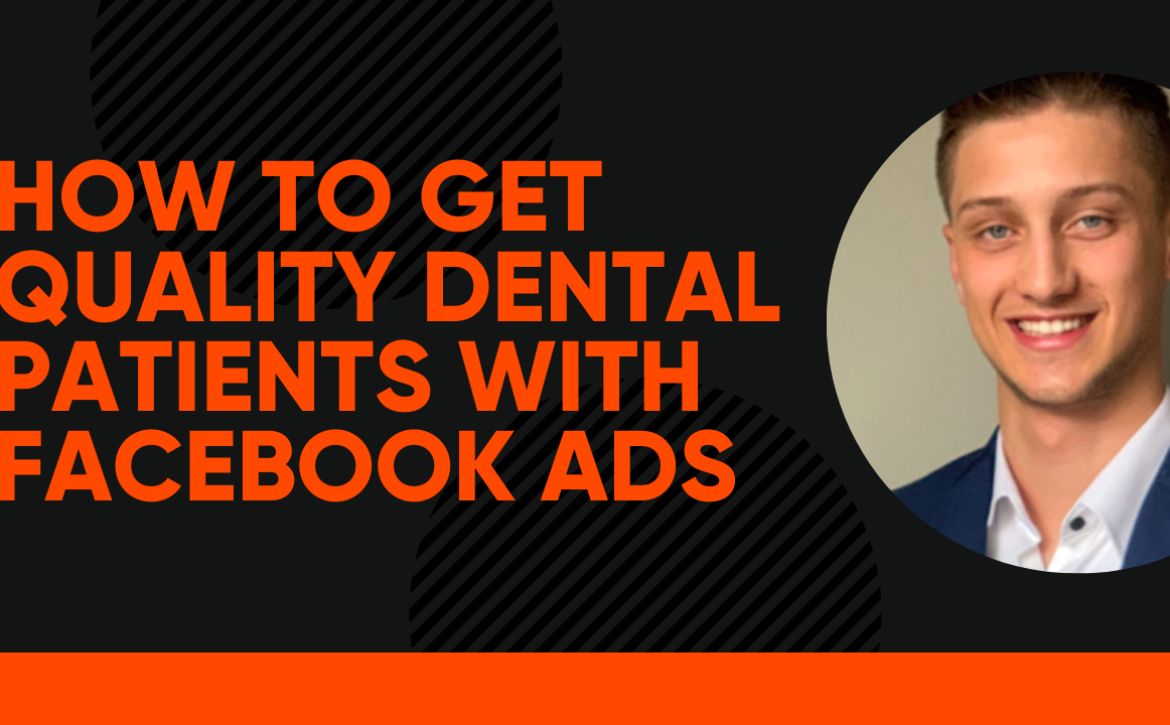How To Get Quality Dental Patients With Facebook Ads
Are you struggling to attract high quality leads? Facebook ads could be the answer…
Facebook has become the largest, most influential social networking site available, boasting over a billion users. While once used as a simple way to connect and communicate with loved ones, these days it’s widely used by businesses to engage and attract customers.
Each day, millions of people around the world log in, providing brands with the perfect opportunity to reach a massive target audience. The site offers numerous marketing tools to help with this, with one of the most effective being “Lead Ads”.
What are lead ads?
Lead ads give you the opportunity to add a short form to your ad, encouraging customers to leave their contact details. They basically encourage a follow-up of some kind, whether that be contact via email, newsletters, phone or simply providing additional information about your business.
The key thing here is that the consumer actually opts in to receive the follow-up, meaning they’re definitely interested in what you have to offer. So how do you use these ads and what do you need to know?
Rules and restrictions
Before you create a lead, it helps to understand the guidelines. They’re actually the same guidelines as you’d follow when creating a standard link ad. There’s a 25-character limit for the headline and a description character limit of 30. The actual text can total 90 characters’ maximum.
It’s very important to note that Facebook only keeps records of leads for 90 days. After this time, you won’t be able to download or view the leads. Therefore, you’re going to need to frequently check your leads if you don’t want to miss out. This can be done via your business page, or you can download them via the Ad Manager tool.
Creating lead ads
You’ll need to use either Power Editor or Ad Manager to create a lead ad campaign. You’ll quickly spot this option when you log in. After clicking that you’ll need to:
- Click on “Create new form”
- Select what information you want to collect
- Enter a link to your website
- Review and confirm
Once you’ve followed the above steps your ad will go live. If you want to ensure your lead ads are as effective as possible, you’ll need to ensure you’re generating the right information. Therefore, it’s recommended you spend a while planning and determining which information will generate the best leads.
Facebook lead ads can be extremely effective, but you do need to make sure you’re following the guidelines and asking for the right information. It’s worth checking out the help pages on Facebook itself before creating your first ad.
3 Ways Dentists Can Come Out Of COVID With Momentum
Are you struggling to attract high quality leads? Facebook ads could be the answer…
Facebook has become the largest, most influential social networking site available, boasting over a billion users. While once used as a simple way to connect and communicate with loved ones, these days it’s widely used by businesses to engage and attract customers.
Each day, millions of people around the world log in, providing brands with the perfect opportunity to reach a massive target audience. The site offers numerous marketing tools to help with this, with one of the most effective being “Lead Ads”.
What are lead ads?
Lead ads give you the opportunity to add a short form to your ad, encouraging customers to leave their contact details. They basically encourage a follow-up of some kind, whether that be contact via email, newsletters, phone or simply providing additional information about your business.
The key thing here is that the consumer actually opts in to receive the follow-up, meaning they’re definitely interested in what you have to offer. So how do you use these ads and what do you need to know?
Rules and restrictions
Before you create a lead, it helps to understand the guidelines. They’re actually the same guidelines as you’d follow when creating a standard link ad. There’s a 25-character limit for the headline and a description character limit of 30. The actual text can total 90 characters’ maximum.
It’s very important to note that Facebook only keeps records of leads for 90 days. After this time, you won’t be able to download or view the leads. Therefore, you’re going to need to frequently check your leads if you don’t want to miss out. This can be done via your business page, or you can download them via the Ad Manager tool.
Creating lead ads
You’ll need to use either Power Editor or Ad Manager to create a lead ad campaign. You’ll quickly spot this option when you log in. After clicking that you’ll need to:
- Click on “Create new form”
- Select what information you want to collect
- Enter a link to your website
- Review and confirm
Once you’ve followed the above steps your ad will go live. If you want to ensure your lead ads are as effective as possible, you’ll need to ensure you’re generating the right information. Therefore, it’s recommended you spend a while planning and determining which information will generate the best leads.
Facebook lead ads can be extremely effective, but you do need to make sure you’re following the guidelines and asking for the right information. It’s worth checking out the help pages on Facebook itself before creating your first ad.
The Rule Of 5: Your Key To Success
Have you heard of Grant Cardone’s 10X event?
This year John Maxwell was speaking at the event and he brought up the concept of the Rule of 5. Essentially what it is, is it’s five core things that you need to do to experience success. It’s super good.
- Know what you want.
- Have the right tool.
- Stay focused.
- Be consistent.
- Stay with it until it’s finished.
Let’s dive into each one of these and break them apart a little bit.
Know what you want.
Looking at the first one, the example is given of, let’s say you want to cut down a tree. The first step is to know you want to cut down the tree, right? You can’t do anything if you don’t know what it is you want to do.
Have the right tool.
The second step is to have the right tool. If we’re going to cut down this tree, what’s going to be the right tool for the job? Probably an ax or chainsaw, right? We have the right tool now.
Stay focused.
The third step is to stay focused. If we start to chop down a tree and then halfway through we get distracted and we just stop. Squirrel! You’re not going to ever chop down the tree. Stay focused. Hit the same tree with the same ax and don’t stop.
Be consistent.
Which leads us to the fourth rule which is to be consistent. Just do it every day. Don’t hit the tree twice. You have to be consistent. If you have any kind of goals or aspirations and you’re trying to reach something, you HAVE to be consistent. You can’t do something once or twice and then say, “oh, it didn’t work. I’m going to give up now”. That’s not going to get you anywhere.
Stay with it until you’re finished.
The fifth rule is to stay with it until you’re finished. That’s the one thing that I think a lot of people struggle with. I know that I’ve battled with consistency a little bit myself. If you’re cutting down the tree, you just have to repeatedly keep hitting it until the tree is chopped down.
If it takes you three days or it takes you 20 years, you have to just keep doing it until you reach that goal. No exception. You can’t say, “well, you know, I’m tired today” or “I’m not feeling 100%” or “I didn’t eat breakfast this morning”. It doesn’t matter! You have to do what you need to do every single day and you have to stay with it until you’re finished. Those are 5 rules John Maxwell shared and they are truly awesome!
If you’re going to cut down a tree, know that you want to cut down the tree. You know that the ax is the right tool. Hit the same tree with the same ax and do it every day. Then just repeat it until the tree is chopped down.
This can be applied to any goal or any aspiration that you have. And if you stick with it, that’s definitely going to be what makes the difference between you staying average and not achieving your goals or you actually making it happen and hitting all your goals. I hope that was helpful for you guys.
Thanks for reading.






